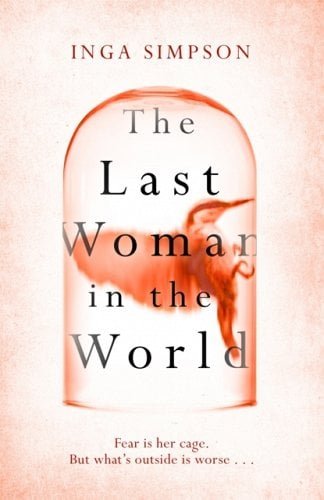The Last Woman in the World by Inga Simpson
★★★☆☆
Living a hermit-like existence in her remote and self-sufficient home in Australia, Rachel has no idea that the outside world has entirely crumbled until another woman and her sick baby knock on her door in the middle of the night. Hannah, mother of poorly baby Isaiah, explains that something mysterious and invisible has spread throughout the world, causing the near-instant death of whoever they encounter. Nearly everyone else has died and society as we know it has disintegrated into chaos, though Hannah and her baby have somehow survived. They ask for Rachel’s help to find medical supplies, so she reluctantly leaves her protective bubble with them on a dangerous hike through the forest.
We gradually learn more about Rachel, her artistic career as a glassblower, and the difficult events of her past that led to her self-imposed isolation from society. Rachel and Hannah develop a cautious friendship as they journey through the outback, fighting off the unnamed deadly demons, and protecting little Isaiah from their grip at all cost. They hope to discover that their loved ones (Hannah’s husband; Rachel’s sister) have survived, too, and so take their journey all the way to Canberra.
The plot of The Last Woman in the World unfolds much like a thriller film, although with relatively few surprises or twists. I did find it a little slow in places – somehow, my interest waned after the fourth or fifth description of Rachel eating a muesli bar or Hannah feeding and changing her baby – though it would probably work extremely well as a film, which would do away with these more tedious passages of text.
There were nevertheless glimmers of interesting moments, mostly thanks to the exotic setting in the Australian forest and descriptions of the lush local flora and fauna (with slightly melodramatic retellings of the environmental damage caused by forest fires). I read The Last Woman as an audiobook, and would recommend this for the added authenticity of an Australian accent.
The shadow of a post-Covid world looms large, too, with occasional nods to a series of ‘pandemics’ in the recent past, though in our book discussion, we wondered whether these references had been shoehorned in after Covid took hold.
This book was rated three-out-of-five stars unanimously by the entire discussion group. It was an enjoyable and easy read, but not one that we would particularly want to pass on to a friend or read again.


